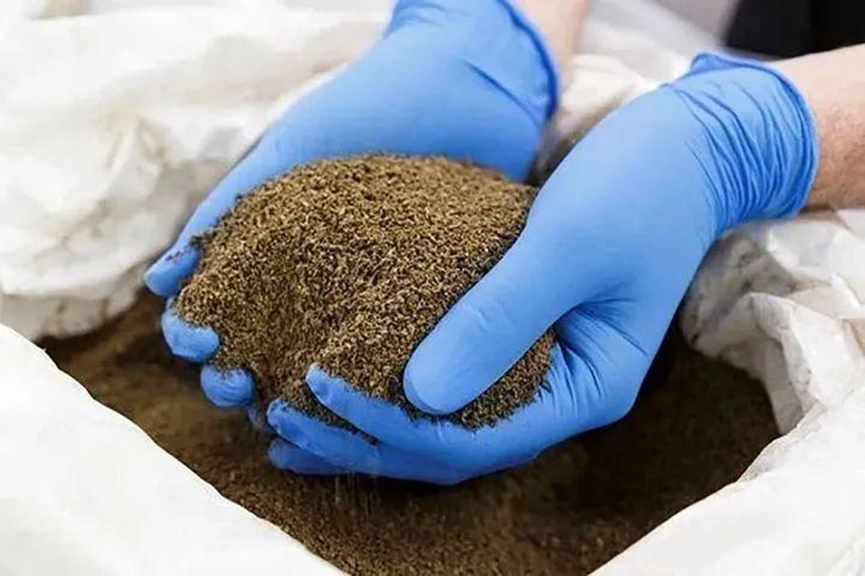Will insect protein become the wind outlet of pet track?

Insect protein is not new to human food. Insect products are eaten in many parts of China or Asia. If insect protein is used in pet food, most pet owners may not accept it.
On the one hand, insect protein, as a major innovation direction of pet food, attracts the attention of top players in the pet industry. On the other hand, due to resistance factors such as technology, consumption habits and policies, there are not many players in the market at present, and there is still a long way to go before large-scale production.
1. Will insect protein become an innovation opportunity for pet food?
In the 21st century, functional food will dominate the human taste buds and breed a functional food market of 600 billion yuan.
Insect food is a typical functional food. Insect protein will be the best additive to change the body. Protein powder, muscle enhancing powder and other related nutritional products have already appeared in the human food chain.
Insect active protein has also become the third generation protein after traditional meat protein and artificial meat protein.
The application of insect protein in pet food field dates back to 2013 at the earliest, and has become increasingly popular in recent years.
Especially in 2018, the investment in insect protein is 40% higher than that in the past four years, of which the investment of Blackwater Tabanus is the largest, accounting for a relatively large proportion. Especially in Britain and France, many start-ups have received venture capital investment.
In fact, insect protein is no stranger to human food. In China or many parts of Asia, insect products will be eaten.
In addition, some fine flour, pasta and other foods will use cricket flour as the seasoning, which can be found in these markets. Many foreign brands have very mature industrial chains and entered the Chinese market.
According to the Research Report on the Development Potential and Investment Direction of China's Insect Protein Industry from 2021-2027 released by Smart Research Consulting, the domestic output of insect protein in 2019 will be 297.99 tons, and the demand will be 257.24 tons; In 2020, China's domestic insect protein output will be 351.22 tons, and the demand will be 322.17 tons.
We can see that more and more insect proteins are used in human food, as well as pets.
In the pet field, giants such as Mars have begun to dabble in insect protein, which may become an important source of pet food protein.
Mars Petcare plans to launch Lovebug, a cat food that uses insects as a source of protein, in the UK.
Mars said: They purchased the larvae of the black water fly from Protix in the Netherlands. Safe and nutritious cat food is produced using insects and processes specially used to process insects and pet food.
On April 13, 2021, a global leader in the production of natural insect protein and fertilizer Ÿ Nsect announced the acquisition of Protectarm, a Dutch supplier of mealworm raw materials in Ermero, east of Amsterdam. Ϋ Nsect french processing plant produces powdery mildew protein and oil (using powdery mildew) for the pet food industry.
At the same time, EnviroFlight of Darling Ingredients announced that it planned to establish a research and development enterprise center in Apex, North Carolina, USA, mainly engaged in the business of Blackwater fly and its larvae. They expect that the insect based pet food raw material research and development base will be put into operation in early 2022.
The facility will conduct research to expand the basic knowledge of the black water fly larvae (BSFL) as a source of protein in animal health, animal nutrition, cosmetics and other product development. EnviroFlight has established its first manufacturing plant in Maysville, Kentucky, USA.
It is predicted that by 2025, the market size of insect protein pet food will reach 1.3 billion US dollars, and maintain a 45% compound growth rate every year. This is a very considerable data,
Whether in terms of nutritional value or consumption upgrading, the application of insect protein is a revolution and innovation revolution in the field of pet food.
2. Dynamic factors of insect protein
The main power sources include the following:
1. Make up for the shortage of traditional protein
At present, in pet food, many of our brands use animal protein, such as chicken and other traditional breeding animals.
However, these protein sources also face some challenges. For example, with the continuous growth of the population, the number of pets is increasing, and the demand for these animal proteins is also increasing.
In this process, pet enterprises will encounter insufficient supply of raw materials, especially some animal epidemics and natural disasters.
Therefore, pet enterprises are constantly seeking and exploring new animal proteins to meet the growing demand in the future.
One is plant protein extracted from nuts, peanuts and other plants;
One is from bacteria and fungi, such as the protein produced by yeast fermentation;
The other is insect protein, which is also the type of protein that we focus on today. For example, crickets, Tenebrio molitor and other particularly good sources of protein. Their nutritional components can be comparable to soybeans, and they also contain rich dietary fiber, unsaturated fatty acids, etc.

Insects are the species with the largest number of species and the most successful evolution on the earth. At present, there are more than one million known insect species, accounting for 2/3 of all known animal species.
The huge insect population has the incomparable super fecundity of other animals. Many insects can reproduce millions of offspring every year, rich in a large number of high-quality proteins, which is a kind of protein resource with great development potential.
As a source of protein, it can make up for the supply of traditional protein in pet food.
2. Environmentally friendly protein source
Insect protein is an environmentally friendly protein, which can reduce greenhouse gas emissions by 96% compared with traditional animal protein.
To take the simplest example, when we turn kitchen leftovers into raw materials to feed insects, they become proteins that can be used in our pet food and animal feed to turn waste into treasure and recycle.
At the same time, it can also reduce the dependence on and loss of water and soil, because some insect proteins only need 2% - 4% water and soil, which is very beneficial to the environment and sustainable development.
3. High nutritional value, low allergy and easy digestion
The experiment of Oxford University has proved that the protein content of many insects is between 40% - 70%, 3-4 times that of fish meat, and contains rich trace elements and amino acids, with a reasonable proportion of amino acids.
The amino acid digestibility and utilization rate of insects is very high, reaching 70% - 80%, which is close to or more than the utilization rate of fish and meat. Therefore, adding insect protein powder to conventional food for mixed consumption can reduce pet allergic reaction to a certain extent.
In recent years, pet food allergy has attracted more and more attention from pet owners, because more and more pets are suffering from allergies due to diversified diets.
According to relevant research, since the proportion of pet cats and dogs allergic to traditional meat is relatively high, reducing the source of protein and selecting high-quality hypoallergenic protein are better ways to improve allergic symptoms.
Insect protein, with the characteristics of easy digestion and absorption, high fatty acid and antibacterial peptide, is an ideal low sensitive food.
For example, Grimpeff insect protein series pet food is a series of low sensitive pet food products customized with high-quality and low sensitive insect protein based on the research of pet food allergy. It provides a new and scientific feeding direction for pet cats and dogs with food allergy.
In extruded grains, if the protein is 30%, the digestibility of cats and dogs is about 80%, but if insect protein is used, the digestibility can reach 88%.
Therefore, insect protein is of great significance for the complete and healthy life of pet diet.
3. Challenge of insect protein
At the same time, we also saw that the application of insect protein in pet food faced many challenges.
1. High cost: cultivation, research and development, large-scale production, sales, etc
First of all, this is a technology that has not been widely promoted, so its cost will be relatively high.
From the perspective of the entire industrial chain, the cost of insect cultivation in the upstream, R&D and standardized large-scale production in the midstream, and the cost of education in the downstream market are not small.
However, in terms of legislation and supervision, it is not very clear and perfect at present. In fact, in Europe, the EU allows insect protein to be used in pet food and aquatic feed, but in many Asian countries, there is still no clear provision in this regard. In China, we treat it more as a by-product of animals than as a meat.
2. Low consumer acceptance
In terms of acceptance, insect protein is much lower than other animal proteins.
In the market, Thailand and China are highly recognized for insect protein. Because some regions in Asia have the habit of eating insects, such as Guangdong, Yunnan and other regions in China will eat all kinds of insects, so insect food is not strange to Chinese consumers.
However, if insect protein is used in pet food, most pet owners are still worried about whether the nutrient content can be comparable to traditional pet food such as chicken and beef, and whether pets will be allergic after eating because of the low popularity rate
In addition, the price of insect protein pet food is very expensive. At present, the price of insect protein per ton is about 300-5000 euros, which is several times higher than the price of fish meal.
Of course, this is a scale effect. When your scale is not large, the price is also high, and the technology being transformed needs to be improved, so it will affect its scale efficiency and cost.
4. Summary
The advantage of insect protein is that it contains a large number of amino acids with balanced content. It is a natural protein that is conducive to the digestion, absorption and utilization of pets, which has certain positive significance in improving the immunity of pets and effectively reducing the risk of disease.
Therefore, insect protein pet staple food can be used as a kind of food with immune function. At the same time, rich unsaturated fatty acids can greatly improve pet's hair quality, color, health and convenience of skin, prevent skin diseases, enhance skin anti-aging, and prevent non seasonal hair loss.
Insect protein looks beautiful, but due to the influence of technology, consumption habits, policies and other factors, there are too many challenges, and its application in pet food is still in the initial stage of exploration. At present, there are few enterprises in scale.
In the face of the highly homogenized pet food track, the application of insect protein may become an innovative direction for enterprises to pursue high-end and differentiation.


